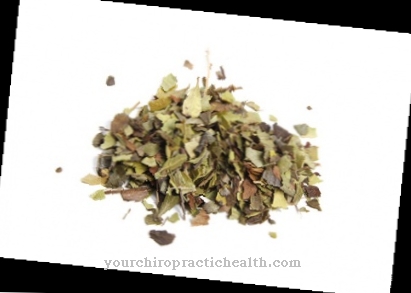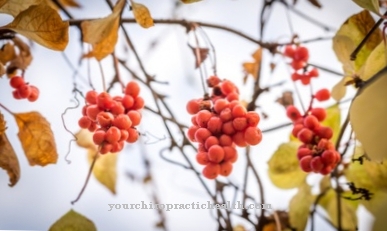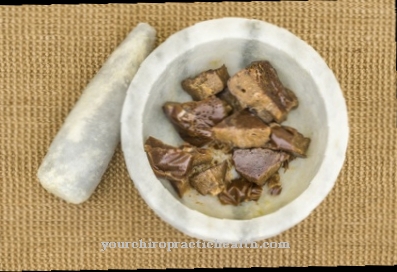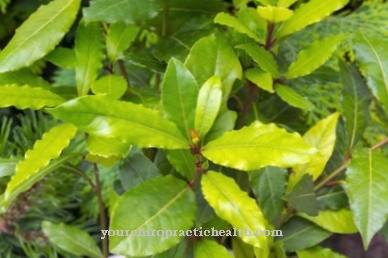Of the Affodill is a monocot of which there are about 20 species. It can be over a meter tall and finds a suitable place anywhere. Regardless of whether in the high mountains or on the coast, the plant impresses with its long lifespan. Since the Affodill is slightly toxic, internal use is not recommended. The plant is under nature protection in Europe.
Occurrence & cultivation of the Affodill

When mainly native to the Mediterranean region Affodill it is an asparagus-like plant that belongs to the grass tree family. The plant is particularly easy to recognize by its size, which can range up to a meter. The Affodill generally prefers calcareous soils in the mountains to thrive. He doesn't mind hot and dry summer months because he survives them well.
Since the Affodill has very hard leaves and is avoided by cattle, it can also be found in large numbers on heavily grazed meadows. The very sociable Affodill forms groups that can fill entire meadows. Bees and the endemic Canarian earth bumblebee fly to them, especially in winter. Since the plant is slightly poisonous, however, it is not suitable as a forage plant.
With full sun and loamy sandy soil, the perennial herbaceous plant can have a lifespan of ten years. It can grow to heights of one to two meters and form a rhizome. This describes a stem axis system that grows underground or just above the ground. The inflorescence of the affodill is mostly branched. The long and narrow bracts are white or rarely pale pink. The strong flowers grow like grapes along the ends of the stem.
The stems are just sprouting up. The flowering time of the spherical, triple capsule fruit, which is about 10 to 15 millimeters long, is from May to August. In summer, egg-shaped capsules containing the seeds appear on the plant's white flowers. The above-ground parts of the plant die off towards the end of summer and the capsules gradually dry out, causing them to burst open at some point and release the seeds. Tubers are formed underground to survive the summer period. In general, the affodill is easy to care for and is rarely attacked by pests.
Effect & application
In ancient times, the starchy tubers of the plant were eaten, and before the introduction of grain cultivation they were an important source of food for the pre-Greek tribes. To remove the bitter substances, they were either boiled or roasted. They are also said to have been used for baking bread mixed with grain.
The Affodill is also used in other areas: The Affodill is suitable for the Alpinum, for perennial borders or for large rock gardens. It comes into its own best as a solitary plant, for example as a large white flowering plant in front of a conifer or other dark background. It can also be planted as a small group in a sandy bed. The Affodill is used as an ornamental plant in these cases.
The plant is also suitable as a single eye-catcher in a rock garden or in combination with lavender or herbs such as rosemary, sage and thyme. This uncomplicated plant thrives well without watering and fertilization. Corresponding seeds are available in stores. The Affodill is usually winter-proof and only needs protection in an unprotected place or in severe frost.
In the summer months, when the plant's leaves wither, it feeds on the moisture it has collected in the thickened roots, but the flower stalks are still upright. Any pruning should be done in spring. In the industrial sector, the active ingredients of the root are used to extract alcohol and to manufacture glue. Beautiful windmills are also made from the withered stems.
On the island of Corsica, the flowers with the stems are cut off on All Saints' Day and then soaked in olive oil to light them around the graves. In ancient times the affodilla was considered a weeping plant and it is also a popular cemetery plant in southern Europe. The storage root is roasted and mixed, for example with figs, an ideal food.
Importance for health, treatment & prevention
Its use as a medicinal plant has also always been of great importance. The medicinal use in folk medicine finds the root in the dried state. It contains hydroxyanthracene derivatives, for example asphodelin, lipids, triterpenes, mucilages and phytosterols. The fresh roots have a pungent taste and are obtained by collecting them from wild sources.
The boiled roots of the affodill help with digestive disorders and gastric ulcers. Since the plant should be avoided as a food because of its toxicity, it can rather complement a tea mixture. In any case, careful dosing is very important. In addition, the crushed tubers can be used to make a paste for an envelope, which externally helps with skin problems, inflammation and ulcers.
The dried roots are also used against water retention. Affodill has various therapeutic properties: draining, diuretic and stimulating the kidneys. However, due to the slight toxicity of the Affodill, it should be used carefully. Internal use should be avoided and other medicinal herbs should be used instead.








.jpg)



















